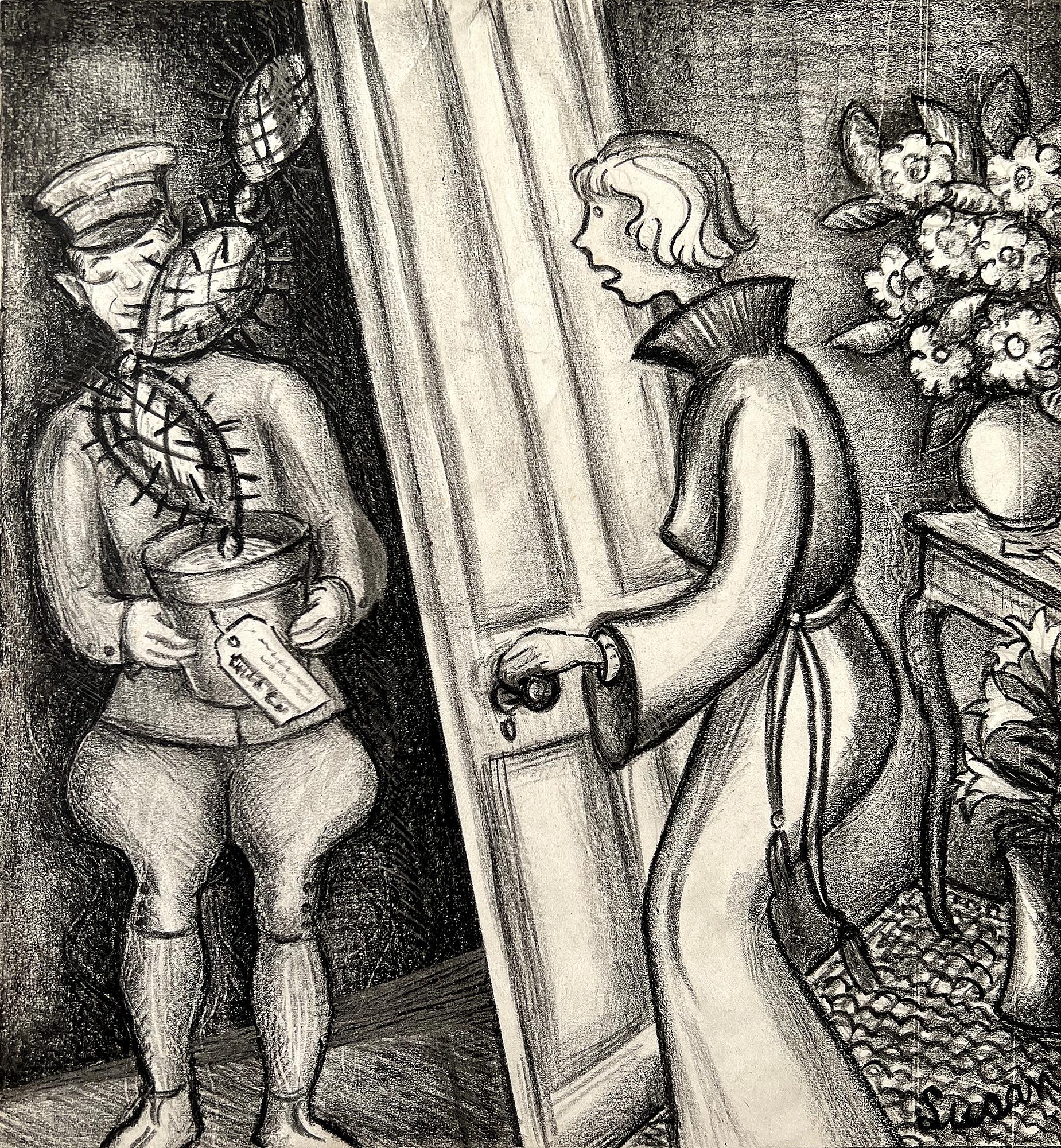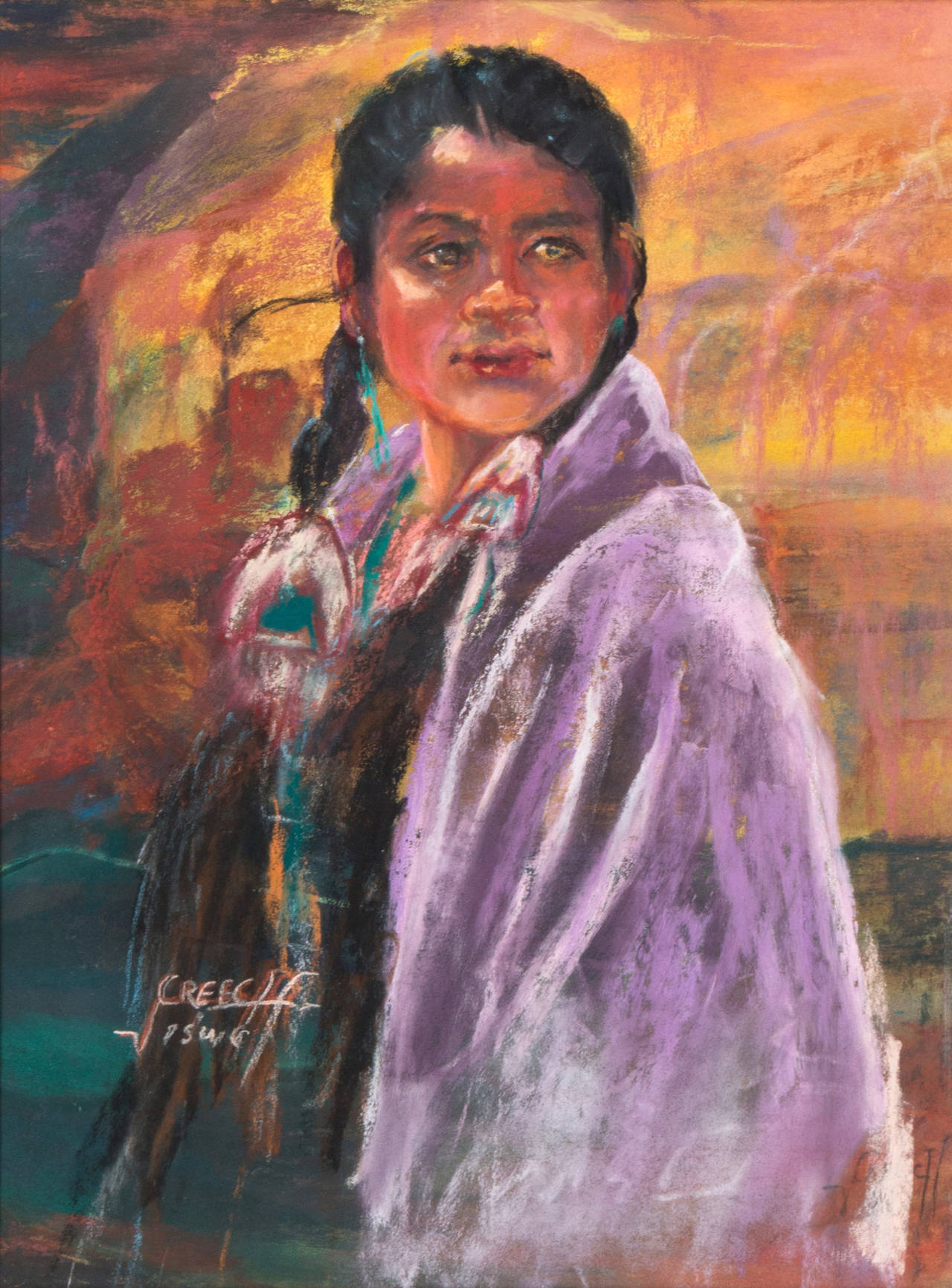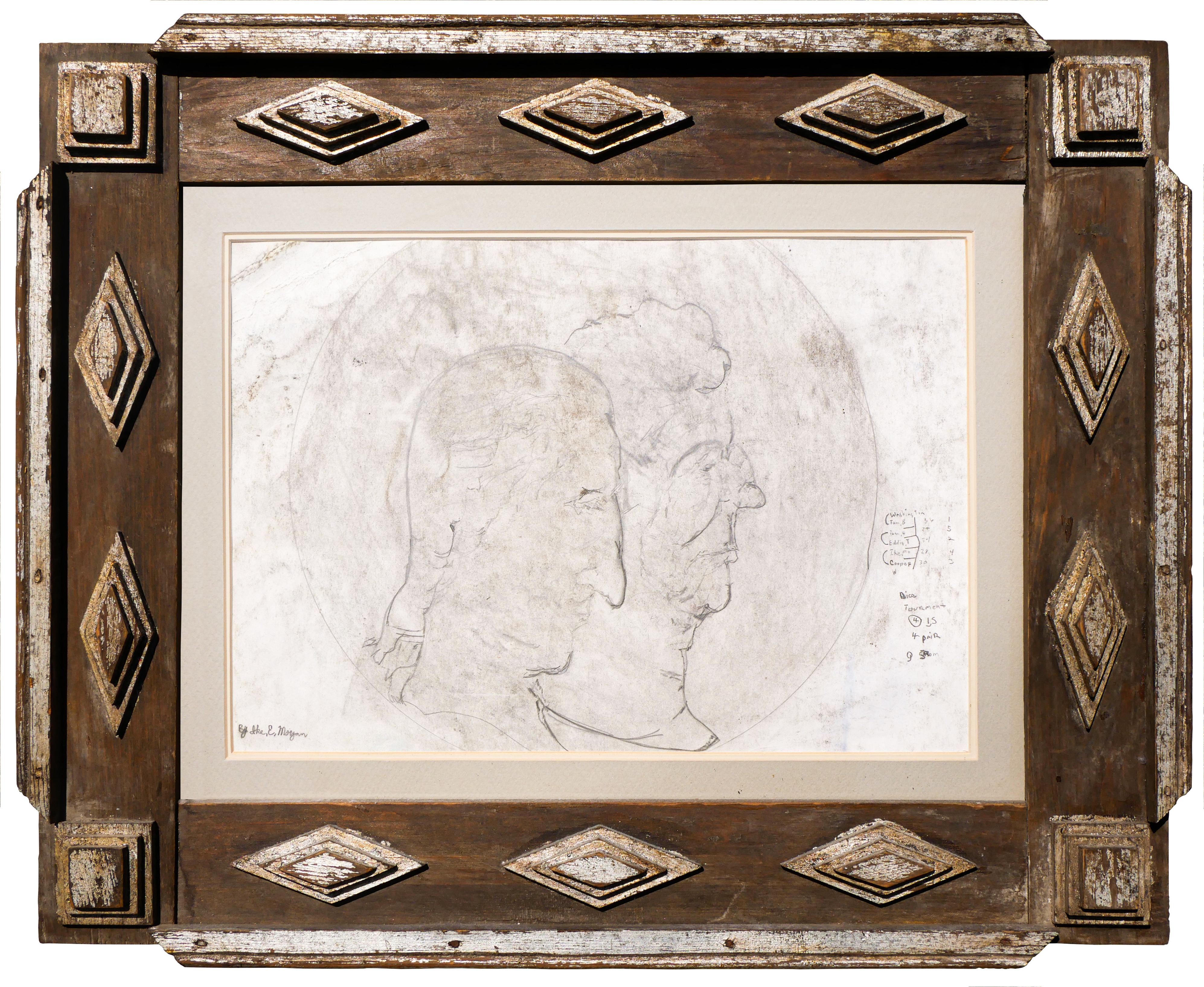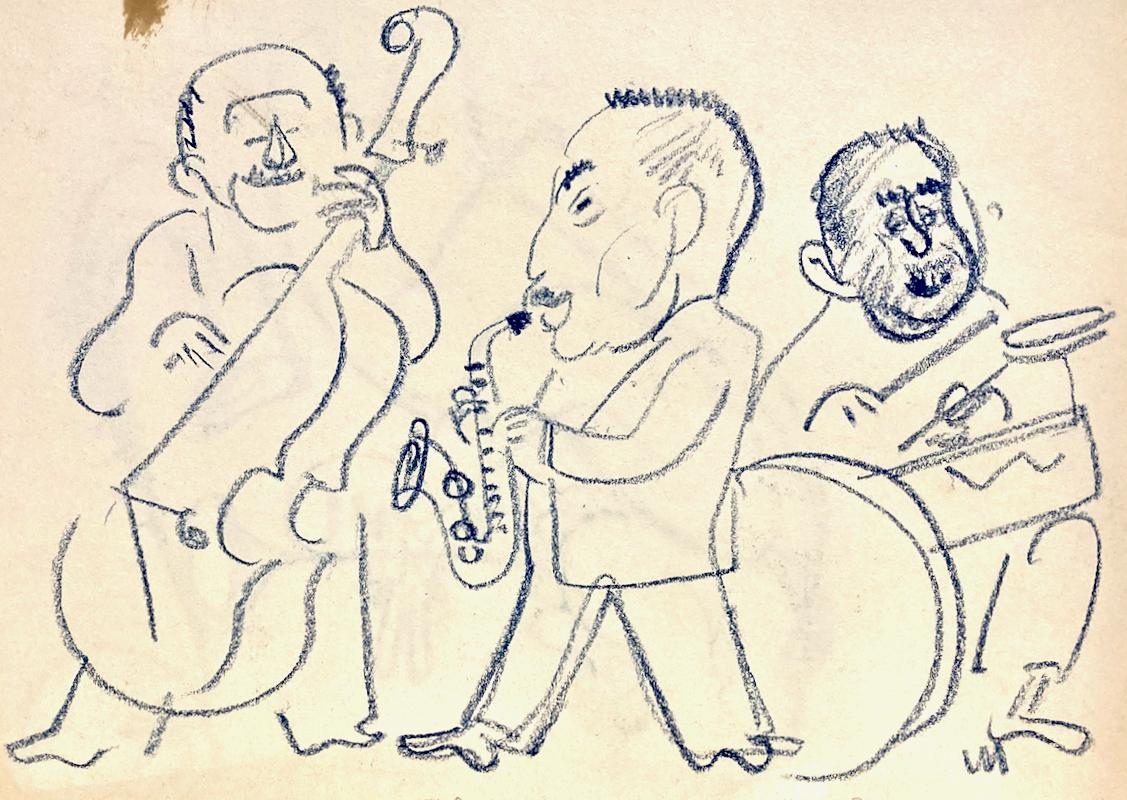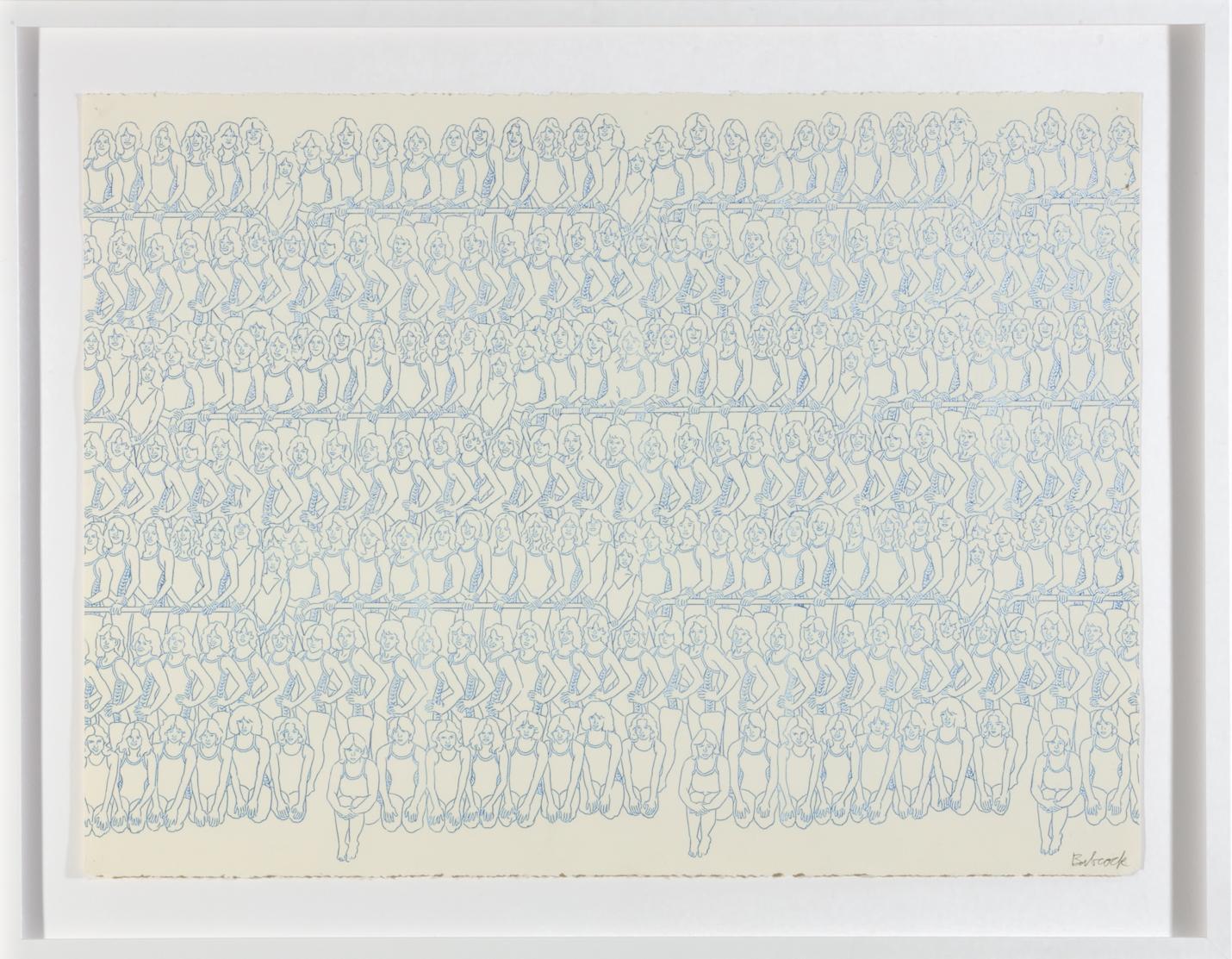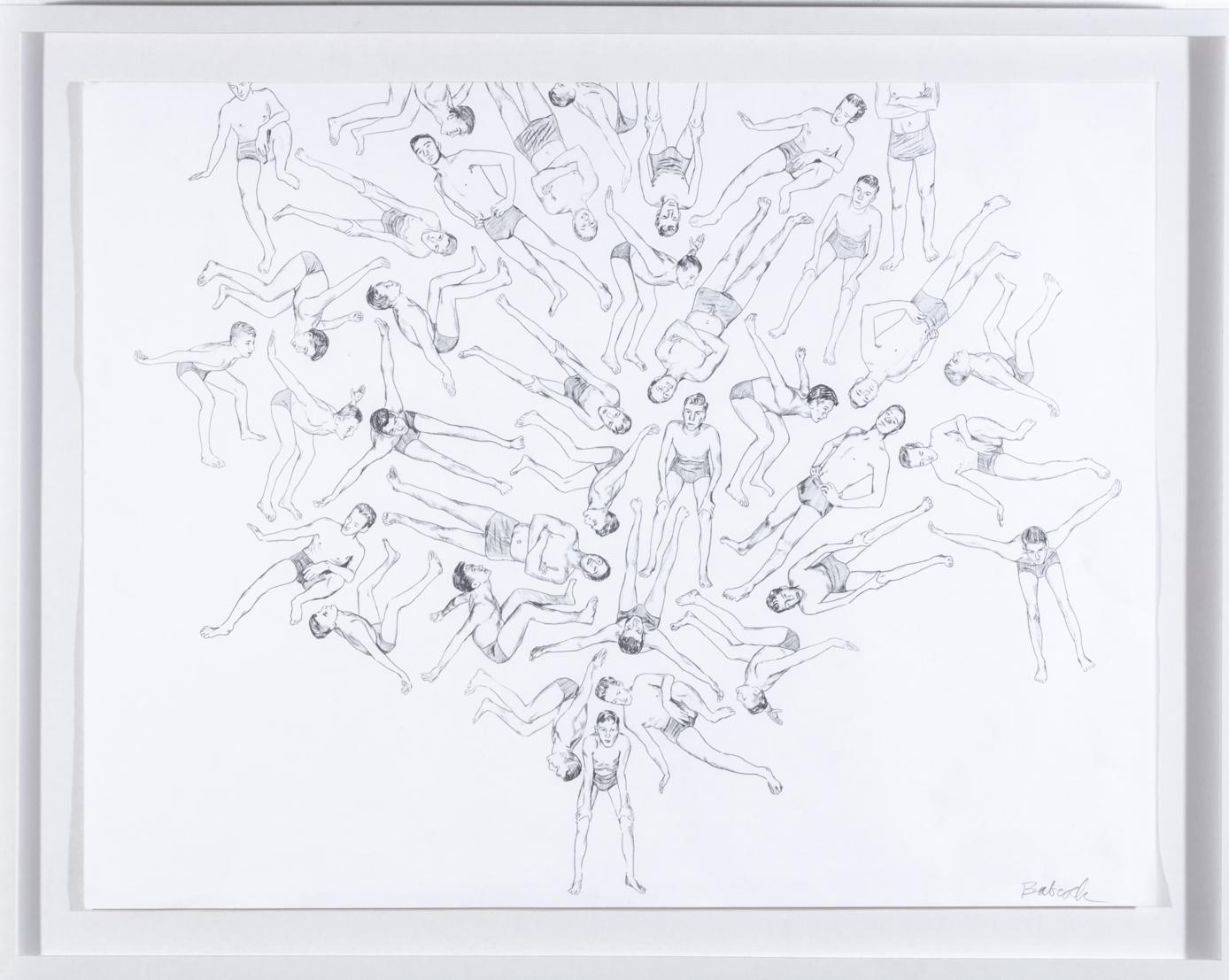Milton Avery"March Avery in Beret, " Milton Avery, American Modernism, Portrait of Artist1951
1951
About the Item
- Creator:Milton Avery (1885 - 1965, American)
- Creation Year:1951
- Dimensions:Height: 17.75 in (45.09 cm)Width: 14.75 in (37.47 cm)
- Medium:
- Movement & Style:
- Period:
- Condition:Excellent.
- Gallery Location:New York, NY
- Reference Number:1stDibs: LU184129905462
Milton Avery
Milton Clark Avery was born in 1885 in Altmar, New York. Largely self-taught, Avery is today regarded as one of the great early modern American artists; his inspired palette, simplified forms and unwavering commitment to a figurative tradition have secured him a place not only in the canon but also in the hearts of the American public.
Always at odds with the dominant style of the time, be it the American Scene Painting and Social Realism of the 1930s and '40s or the Abstract Expressionism of the 1950s, Avery's oeuvre is a labor of singular dedication. As a boy, Avery worked factory jobs to help support his large family following their move to Connecticut in 1898. He did not seriously begin to pursue art until sometime following his father's death in 1905, when he intermittently attended classes at the Connecticut League of Art Students. He made his artistic debut in 1915 at the Wadsworth Atheneum's Fifth Annual Exhibition of Oil Painting and Sculpture.
In 1925 Avery relocated to New York to be closer to his future bride. Following his marriage in 1926 he was able to quit working and paint full time. At this time Avery replaced the light-drenched palette of his Hartford days with more muted tones. He also exchanged his heavy impasto for thin washes of pigment, which he used to create veiled fields of color.
In 1927 Avery exhibited with the Society of Independent Artists. Success quickly followed. Two of his paintings were selected for inclusion in a 1928 group show at the Opportunity Gallery in New York. Also in 1928, renowned collector Louis Kaufman became the first person to purchase a painting by the artist; and in 1929 Duncan Phillips purchased Winter Riders (1929) for the Phillips Memorial Gallery, making it Avery's first painting to enter a museum collection.
Avery's signature figurative style characterized by simple forms and flattened shapes filled with arbitrary color "in the manner of Matisse" was fully developed by the 1940s. His work as a colorist greatly influenced succeeding generations of artists, specifically Color Field painters Mark Rothko, Barnett Newman, and Adolph Gottlieb. In 1944 he was given his first solo museum exhibition at the Phillips Memorial Gallery. That same year, he entered into a contract with famed dealer Paul Rosenberg, in which Rosenberg agreed to purchase 25 of Avery's paintings twice a year.
In 1952 the Baltimore Museum of Art hosted Avery's first museum retrospective, and Avery was the subject of a major article in Arts magazine by eminent art critic Clement Greenberg. In 1960 the Whitney Museum of American Art hosted his second museum retrospective.
Find authentic Milton Avery prints and paintings on 1stDibs.
(Biography provided by Helicline Fine Art)
- ShippingRetrieving quote...Ships From: New York, NY
- Return PolicyA return for this item may be initiated within 3 days of delivery.
- "Young Girl (Jenue Fille)" Louis Valtat, French DrawingBy Louis ValtatLocated in New York, NYLouis Valtat Young Girl Stamped with initials lower right Pencil on brown paper Sight 7 x 6 inches Provenance: Mrs. Ernest M. Werner, New York Private Collection, Rhode Island Loui...Category
Early 20th Century Fauvist Figurative Drawings and Watercolors
MaterialsPaper, Pencil
- "A Martinique Native in French Guyana, " Black Female Portrait, Female ArtistLocated in New York, NYMay Mott Smith (1879 - 1952) A Martinique Native in French Guiana, circa 1925 Watercolor on paper 24 x 20 inches Signed lower right; titled on the reverse “Martinique Native” is an ...Category
1920s Feminist Portrait Drawings and Watercolors
MaterialsPaper, Watercolor
- "In Foreign Parts" Eugene Higgins, Southwestern Pueblo, Modern FigurativeBy Eugene HigginsLocated in New York, NYEugene Higgins In Foreign Parts, circa 1913 Signed lower right Watercolor on paper Sight 17 x 13 inches Born William Victor Higgins in 1884 to a Shelbyville, Indiana farm family where the only art Victor was aware of as a child was his father's love of flowers. "He loved their forms and their colors, and he tended his garden as a painter might work a canvas." At the age of nine, Victor met a young artist who traveled the Indiana countryside painting advertisements on the sides of barns. He purchased paints and brushes so the young Higgins could practice his own artwork on the inside of his father's barn. He also taught Victor about art museums and especially about the new Chicago Art Institute. This information never left the young artist, and he saved his allowance until his father allowed him at the age of fifteen to attend Chicago Art Institute. He worked a variety of jobs to finance his studies both there and at the Academy of Fine Arts. Victor Higgins traveled to New York in 1908, where he met Robert Henri, who became a significant influence by depicting every-day scenes and stressing the importance of the spirit and sense of place as important factors in painting. Higgins was also greatly affected by the New York Armory Modernism Show of Marsden Hartley in 1913. While Victor Higgins was in Chicago he met former mayor and avid collector Carter H. Harrison who was to prove instrumental in the growth of Higgins career for several years. Harrison agreed to support Higgins for four years to go to Paris and Munich and paint and study in the great museums in Europe. While at the Academie de la Grande Chaumier in Paris (1910-1914) he met Walter Ufer, who was another Chicago artist being sponsored by Carter Harrison. This meeting was not only a life-long friendship, but the beginning of a great change in the way Higgins looked at "American" art. He decided that America needed it's own authentic style rather than the 19th Century classic style he was taught in Europe. Very soon after returning to Chicago in 1914, Harrison sent him and Walter Ufer on a painting trip to Taos, New Mexico for a year in exchange for paintings. Higgins made other similar agreements and was able to support himself with his painting. This trip was a life-changing experience and introduced Higgins to the authentic America he had been looking for. In 1914 Taos was an isolated village about twelve hours from Santa Fe on an impossible dirt road. But the colorful life of the pueblo people and the natural beauty drew a collection of artists who became the Taos art colony, from which the Taos Society of Artists was founded in 1915. Victor Higgins became a permanent resident within a year of his arrival and a member of the society in 1917, exhibiting with Jane Peterson in 1925 and with Wayman Adams and Janet Scudder in 1927. The members would travel around the country introducing the Southwest scenes with great success. He remained a member until the Society's dissolution in 1927. Higgins was the youngest member of the group of seven. Other members were Joseph Henry Sharp, Bert Phillips...Category
1910s American Modern Figurative Drawings and Watercolors
MaterialsWatercolor, Paper
- Mercedes Matter, New York School Abstract FiguresBy Mercedes MatterLocated in New York, NYMercedes Carles Matter (1913 - 2001) Untitled, circa 1937 Pastel on paper 16 x 13 1/2 inches Estate stamped on the reverse Provenance: Estate of the artist Spanierman Gallery, New York Private Collection, Pennsylvania circa 2013 Private Collection, New York, 2021 Mercedes Matter was born in New York in 1913. Her father, the American modernist Arthur B. Carles, had studied with Matisse. Her mother, Mercedes de Cordoba, was a model for Edward Steichen. Ms. Matter grew up in Philadelphia, New York and Europe. She began painting under her father's supervision at age 6, and studied art at Bennett College in Millbrook, N.Y., and then in New York City with Maurice Sterne, Alexander Archipenko and Hans Hofmann. In the late 1930's, she was an original member of the American Abstract Artists organization and worked for the federal Works Progress Administration, assisting Fernand Léger on his mural for the French Line passenger ship company. Léger introduced her to Herbert Matter, the Swiss graphic designer and photographer, whom she married in 1939. The Matters were active in the emerging New York art scene and also traveled frequently to Europe. Their closest friends included Jackson Pollock, Lee Krasner, Franz Kline, Philip Guston, Alexander Calder and Willem de Kooning. They were also close to Alberto Giacometti, who was an important artistic role model for Mrs. Matter and a frequent photographic subject for her husband. Beginning in 1953, Mrs. Matter taught at the Philadelphia College of Art (now University of the Arts), Pratt Institute and New York University. Based on her teaching experiences she wrote an article for Art News in 1963 titled ''What's Wrong with U.S. Art Schools?'' In it, she lamented the phasing out of the extended studio classes required to initiate ''that painfully slow education of the senses,'' which she considered an artist's life work. The article prompted a group of Pratt students to ask her to form a school based on her ideas, which led, in 1964, to the founding of the New York Studio School. Originally in a loft on Broadway, the school gained almost immediate support from the Kaplan Fund, the Rockefeller Brothers Fund and the Ford Foundation. It granted no degrees, had only studio classes and emphasized drawing from life. Its teachers, chosen by the students, included the artists Guston, Bradley Walker Tomlin, Charles Cajori, Louis Finkelstein...Category
1930s Abstract Expressionist Figurative Drawings and Watercolors
MaterialsPaper, Pastel, Oil Pastel
- "Night Stroll" Amy Londoner, Ashcan School, Figurative NocturneBy Amy LondonerLocated in New York, NYAmy Londoner Beach at Atlantic City, circa 1922 Signed lower right Pastel on paper Sight 23 x 18 inches Amy Londoner (April 12, 1875 – 1951) was an American painter who exhibited at...Category
1910s Ashcan School Figurative Paintings
MaterialsPastel, Paper
- "Beach at Atlantic City, New Jersey" Amy Londoner, Ashcan School, FigurativeBy Amy LondonerLocated in New York, NYAmy Londoner Beach at Atlantic City, circa 1922 Signed lower right Pastel on paper Sight 23 x 18 inches Amy Londoner (April 12, 1875 – 1951) was an American painter who exhibited at...Category
1920s Ashcan School Figurative Paintings
MaterialsPastel, Paper
- Surprised Woman with Cactus 1920s Female IllustratorBy Susan FlintLocated in Miami, FLThe postman's delivery of a limp cactus creates a big emotional response the female recipient. Most likely an interior illustration for a newsstand magazine. Signed lower right Sus...Category
1930s American Modern Figurative Drawings and Watercolors
MaterialsPaper, Graphite
- 'Portrait of a Young Navajo', Native American, Arizona, California Woman artistBy Victoria Creech StewartLocated in Santa Cruz, CASigned lower left 'Creech PSWC' and created circa 1975 A compelling pastel study showing the subject dressed in brightly-colored ceremonial robes and gazing past the viewer. An eleg...Category
1970s American Modern Figurative Drawings and Watercolors
MaterialsPastel, Archival Paper
- Black and White Abstract Figurative Drawing of Men with Text ElementsLocated in Houston, TXMonochromatic abstract figurative drawing by Texas artist Ike E. Morgan. The drawing depicts two figures in profile and some textual elements around them. Signed by the artist at the...Category
1990s American Modern Portrait Drawings and Watercolors
MaterialsPencil, Archival Paper
- Alfred Bendiner, Johnny Hodges (Johnny Hodges, Bass Fiddle & Traps)By Alfred BendinerLocated in New York, NYDid Bendiner ever miss a performance, show, concert, play? Was there anyone he didn't know? This double-side drawing in blue crayon shows Johnny Hodges (jazz saxophonist extraordina...Category
1950s American Modern Figurative Drawings and Watercolors
MaterialsCrayon
- Swim TeamBy Jay Alan BabcockLocated in Saint Louis, MOJay Alan Babcock is a St. Louis-based graphic designer and painter. His work exhibits his interest in the visual language of Americana, including old ...Category
2010s American Modern Portrait Drawings and Watercolors
MaterialsCarbon Pencil
- DiversBy Jay Alan BabcockLocated in Saint Louis, MOJay Alan Babcock is a St. Louis-based graphic designer and painter. His work exhibits his interest in the visual language of Americana, including old ...Category
2010s American Modern Portrait Drawings and Watercolors
MaterialsCarbon Pencil
